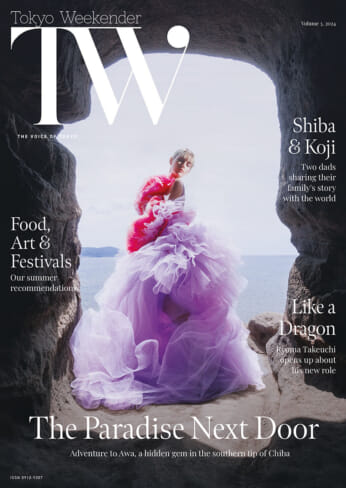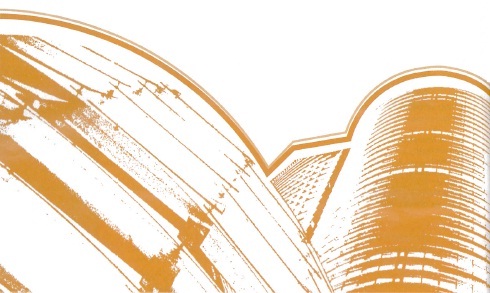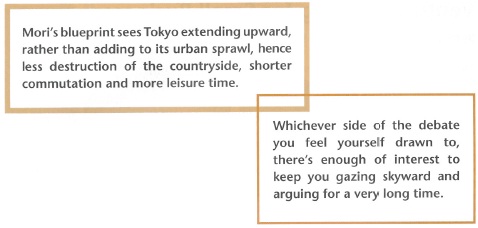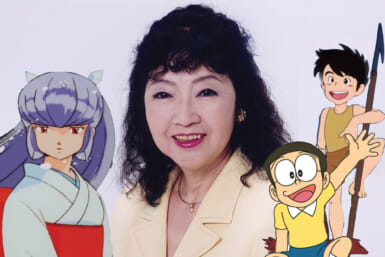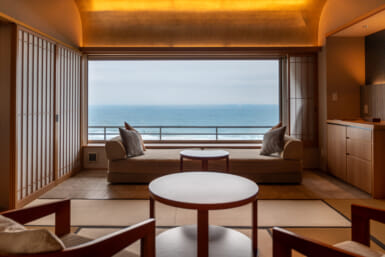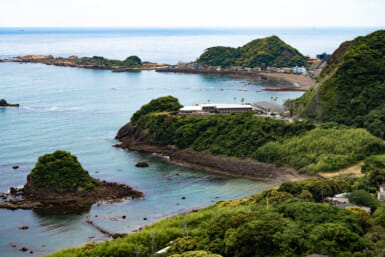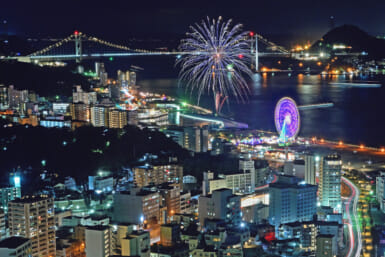Ian Priestley investigates the ever-changing Edo skyline
Views on architecture in Japan often split into two camps. On one hand, you’ve got the view espoused by the likes of Alex Kerr, author of Dogs and Demons, who points to the sheer ugliness of Japanese cities, shaped by the construction industry with buildings appearing with little respect for what lies around. Incongruities like the futuristic Kyoto Station and Asakusa’s ‘Golden Flame’ Asahi Building, more grittily referred to by locals as “the golden poo,” are cited as prime examples of this. Interesting enough in their own right, many would argue, but why build them there?
On the other hand, you have those who revel in the contrasts that Japanese cities offer, claiming these contrasts, and the constant need to rebuild and recreate, are themselves part of Japanese culture and tradition; the small shrine sandwiched between the most modern of tower blocks a defining image.
Whichever side of the debate you feel yourself drawn to, there’s enough of interest to keep you gazing skyward and arguing for a very long time.
The skyline of Tokyo has rarely stood still. In the last century alone, the great Kanto Earthquake and the Second World War wiped the slate clean and heralded massive rebuilding. The story goes that after World War II when the U.S.’s plans for redrawing the city arrived in Tokyo, the planners were told it was too late, rebuilding was already well under way. Indeed, less than 20 years later, when the Olympic games were held in Tokyo in 1964, Kenzo Tange’s Olympic Stadium in Yoyogi Park was a testament to just how much Tokyo’s phoenix had risen.
Tange is, without doubt, the father of modern Japanese architecture. His buildings mirror Japan’s own growth. In the highrise area of Nishi Shinjuku, which not so long ago was wasteland, the Metropolitan Building (1989) with its north and south towers, and plaza based on the Campo in Sienna, was a flagship for the bubble era. The Park Tower followed a couple of years later in 1991, with its three staggered towers and polygonal glass roof, housing the majestic Park Hyatt Hotel and giving Tokyo that futuristic look so favored by photographers and film-makers.
Modern architecture became a status symbol in Japan in the Eighties and early Nineties, and also a way of channeling some of the vast sums of money that were being pumped around. Architects had a field day on some of the more eye-catching structures that you can still see today. Kikutake’s Edo-Tokyo Museum (1992), which somehow managed to bring to mind both a temple and a space invader, sprang up. Likewise Maki Fumihiko’s Metropolitan Gymnasium in Sendagaya with its huge roof had locals debating whether it looked more like a samurai’s helmet or a space ship.
Foreign architects such as Phillip Starck (Asahi Building) and Rafael Vinoly were invited along to the party. Vinoly’s Tokyo International Forum (1996), a huge glass ship-like creation moored in Yurakucho leaves visitors open jawed.
The Odaiba development area became an architect’s theme world with sci-fi structures such as the Fuji Television headquarters (another range creation) and the Tokyo Big Site Building becoming tourist attractions in their own right.
The bubble years are gone, however, and with it, you might think, some of the grander architectural schemes. But what of more recent additions to the Tokyo skyline?
Of course, the place that immediately springs to mind is Roppongi Hills.
For this brainchild of property developer Mori, a cast of some of the world’s finest architects was assembled: the Kohn Pederson Fox team designed the 53-storey tower; Terence Conran was behind the residential towers; and Japanese architect Maki Fumihiko (he of the helmet/spaceship debate) worked on the TV center.
Although this seems not a million miles away from the excesses of the bubble era, Mori’s ‘city within a city’ is intended as a less decorative, more practical concept. An attempt to treat buildings, not as objects in a gallery, detached from their environment hut rather as part of a broader scheme to improve the city and the life of its residents.
Roppongi Hills presents an ideal city of the future where people can live, work and play in the same location. The buildings are innovative, user friendly, glass-walled, allowing natural light and greenery to flourish. Mori’s blueprint sees Tokyo extending upward, rather than adding to its urban sprawl, hence less destruction of the countryside, shorter commutation and more leisure time. With its cinemas, galleries, fine restaurants and designer shops it offers plenty of choices of wait to do with that time, aiming to make culture and the arts a part of daily life. The website www.mori.co.jp presents the Mori vision of a 21st century cіtу in full.
In reality, however, given the cost of an apartment there, it’s likely that Roppongi Hills will remain as close to the reality of most people’s life as a day out at Disneyland, which indeed it has become for most Tokyoites. And whether it is a harbinger of an age of greater urban planning remains to be seen; trying to predict the future of Tоkуо is a notoriously difficult business. One thing’s for sure though, should you decide to leave Tokyo and then pay a return visit in ten years or so, don’t expect to find things as you remember them.
